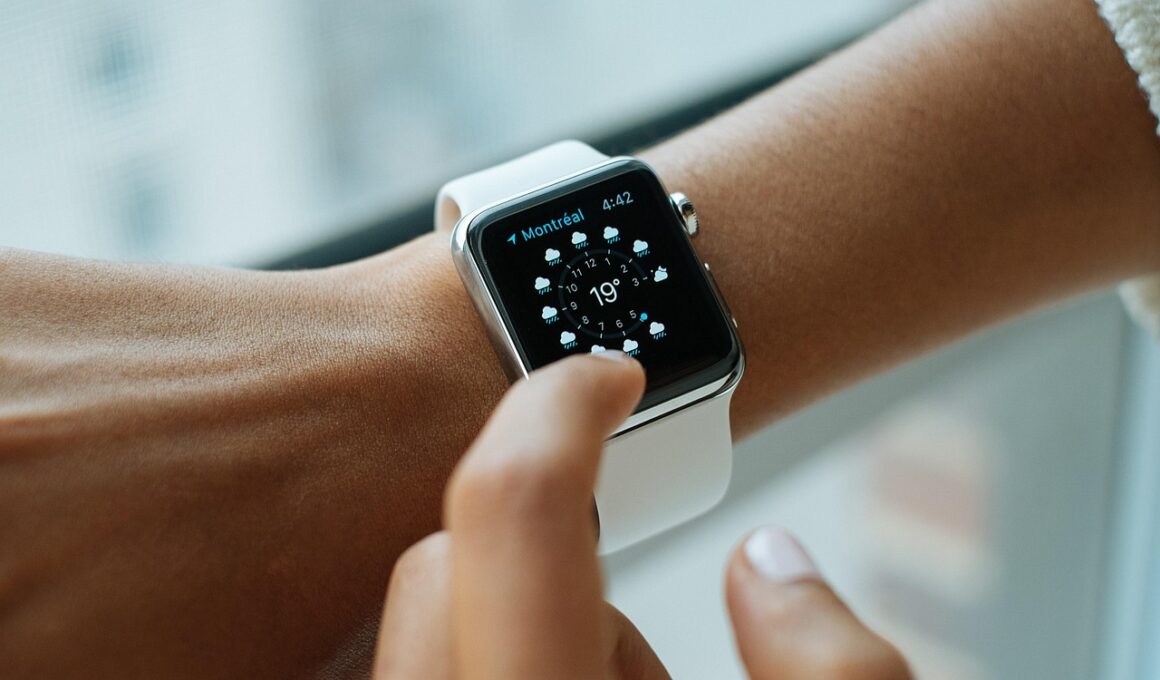Evaluating Wrist Torque in Competitive E-Sports Players
The rise of competitive e-sports has prompted an increasing interest in the biomechanics, particularly concerning the hands and wrist. Players often engage in hours of intense gameplay, placing significant stress on these crucial areas. Understanding wrist torque is essential for optimizing performance and preventing injury. Evaluating torque in the wrists of e-sports athletes can guide interventions designed to enhance efficiency and potentially extend career longevity. Enhanced wrist biomechanics lead to improved precision in gameplay, which may provide a competitive edge. This assessment requires specific methodologies that can measure force and torque produced by the wrist during key e-sports movements. By utilizing specialized equipment and techniques, practitioners can quantify levels of torque generated during various activities. Such evaluations not only inform training regimens but also shed light on ergonomic adjustments that can be made to gaming equipment. Ultimately, a thorough understanding of these forces allows stakeholders to create safe gaming environments and promote healthy practices among players. The relationship between wrist torque and repetitive motions in e-sports merits continued research, particularly as the industry grows. Focused studies will help unravel the intricate connections between biomechanics and e-sports performance.
Previous investigations into wrist biomechanics have systematically explored how torque affects gameplay efficiency. This exploration points to various factors influencing the energy transfer from players to devices during gameplay. Key components of wrist function include not just torque but also the role of muscle strength and endurance, which contribute significantly to athletic performance. Essentially, wrist torque relates to the rotational force available when performing actions such as aiming or executing commands. Additionally, it is vital to consider muscle fatigue, which can diminish torque production and lead to suboptimal performance. Players often respond differently to prolonged periods of gaming, indicating a need for individualized assessments. Research has shown that ergonomic setups can mitigate adverse effects on wrist health. This information can prove invaluable not just for players but also for coaches and trainers looking to enhance performance through biomechanical insights. Implementing strategies based on torque evaluations can lead to more effective training and competitive strategies. By fostering a greater understanding of these dynamics, stakeholders can ensure that players receive the necessary support for both immediate success and long-term well-being. Thus, analyzing wrist torque creates a foundation on which better gaming practices can be built.
Understanding the Mechanics of Wrist Torque
The mechanics of wrist torque encompass various physiological elements that underpin performance in e-sports. Torque depends on the mass of the forearm and the distance from the pivot point of the wrist joint to where force is applied. This relationship is critical in competitive settings where precision is paramount. As players execute high-velocity movements, torque is generated in response to muscle contractions across the forearm and wrist. During play, excessive torque can contribute to potential strains or injuries. Observing best practices in wrist positioning and movement dynamics directly impacts the force exerted during gameplay. A well-aligned wrist can enhance energy efficiency, promoting better control over movements and reducing unwanted physical stress. Moreover, understanding these mechanics can guide the development of better ergonomic devices and interfaces that align with natural wrist motions. Rehabilitation protocols can also be tailored around these insights to restore optimal torque production following injuries. Consequently, a comprehensive approach that integrates biomechanics into everyday training routines holds promise for improving functional outcomes in e-sports players. Ultimately, increasing awareness around kinematic principles can enhance safety and performance in the competitive e-sports landscape.
To evaluate wrist torque effectively, practitioners typically employ various assessment tools and methods tailored to the demands of e-sports. Common tools include dynamometers, which measure force output during isometric contractions, offering insights into torque generation. Furthermore, motion capture technology can track wrist movements in real-time, providing valuable data on how torque varies across different gaming scenarios. Combining these technologies with biomechanical models allows for precision in measuring the influence of external factors, such as equipment and posture. This multidimensional analysis will yield a clearer understanding of the interplay between wrist torque and overall performance. Factors such as grip strength, finger dexterity, and wrist flexibility must all be considered in these evaluations. Additionally, integrating qualitative feedback from players regarding their experiences and perceived exertion can enrich the analysis. Through these methods, coaches and sports scientists can develop targeted training interventions aimed at improving specific metrics associated with performance decline. The emphasis on data-driven approaches ensures that players can engage with personalized training regimens that elevate their skills while minimizing the risk of biomechanical injuries. This comprehensive approach is vital for fostering a sustainable e-sports environment that values player health.
Implications of Wrist Torque on Performance
The implications of wrist torque in competitive e-sports extend beyond mere performance metrics to encompass overall well-being. Effective management of wrist health can lead to sustained competitive advantage over time. As players navigate the intricacies of different game genres, an understanding of the diverse demands placed on their wrist torque is critical. The creation of tailored training programs grounded in torque evaluations can facilitate improvements in essential skills such as reaction time and accuracy. Incorporating strength training regimes that address identified deficits ensures players can meet the physical challenges of e-sports. Moreover, insights gained from torque assessments can lead to informed choices about gaming equipment, promoting designs that bolster natural wrist mechanics. Consequently, these adjustments create a more ergonomic gaming experience, yielding better performance and less risk of injury. Recognizing the holistic benefits derived from an intricate understanding of biomechanics can help athletes and coaches make smarter choices in training and equipment. E-sports entities can also adopt wellness initiatives centered around biomechanical health as a long-term strategy to promote player longevity. Emphasizing these aspects contributes not only to individual player success but also to the industry’s credibility as a serious sport.
Long-term studies investigating wrist torque among e-sports players can lead to significant advancements in the understanding of player health and performance optimization. Evaluating changes across different skill levels and gaming practices provides clues about how torque adapts during gameplay. Furthermore, such research can inform public discourse surrounding gaming-related injuries, helping to dispel myths regarding the natural effects of prolonged gaming sessions. By continuously monitoring metrics such as torque, muscle conditioning, and flexibility over time, researchers can identify at-risk players and suggest proactive measures. This preventative approach can foster early interventions tailored to individual needs, enabling players to thrive competitively. Literature supporting this understanding is crucial for broadening the scope of research funding and interest in the biomechanics of e-sports. Greater awareness can lead to collaborations between scientists and gaming organizations, establishing comprehensive support systems for athletes. In essence, longitudinal studies in wrist biomechanics have the potential to shape policy changes and improve safety regulations. Over time, these cumulative insights will enhance the sporting environment, revolutionizing perceptions of e-sports and emphasizing the value of player health.
Conclusion: The Path Forward in Wrist Biomechanics
As the world of competitive e-sports evolves, the importance of understanding wrist biomechanics will continue to grow. Evaluating wrist torque presents a unique opportunity to enhance performance while safeguarding player health. The growing body of research into wrist torque reveals critical insights into how to optimize gaming interactions with technology effectively. Future studies must address the gaps in current knowledge, striving for a comprehensive understanding of how different factors influence wrist dynamics. By refining torque evaluation methodologies, researchers can empower players and coaches with actionable insights. Additionally, collaboration across various disciplines, such as sports science, physiotherapy, and ergonomics, will be essential to advancing the conversation. Implementing holistic training solutions combines findings from biomechanical studies with practical applications, thereby fostering an environment of well-informed athletes. As insights into wrist biomechanics deepen, gaming communities can benefit from established protocols that prioritize health alongside competitiveness. Ultimately, the exploration of wrist torque in competitive e-sports is merely the beginning of a more extensive journey. This journey promises to harmonize athletic excellence with the well-being of dedicated players.
Addressing wrist biomechanics is integral not only for players but also for the broader e-sports community. Emphasizing a proactive approach fosters a culture of safety and resilience among players. By prioritizing biomechanical education, athletes can adapt their playstyles to minimize harmful practices while maximizing performance output. As these discussions evolve, they can influence policy and regulatory frameworks within the e-sports landscape. This has far-reaching implications for how games are designed and how players interact with technology. Ergonomically conscious designs that consider wrist biomechanics can substantially enhance player experiences, leading to improved satisfaction and effectiveness. As we continue to plunge into the world of competitive gaming, staying informed about biomechanical principles will be essential. By engaging with the science of wrist torque, players can become advocates for healthy gaming habits within their communities. The role of research is paramount here, as ongoing studies will explore the implications of ergonomics in e-sports. It is crucial to appreciate the synergy between healthy practices and competitive success. Players equipped with the knowledge of wrist biomechanics will be better prepared for the challenges they face, leading to enhanced overall enjoyment of the e-sports experience.


